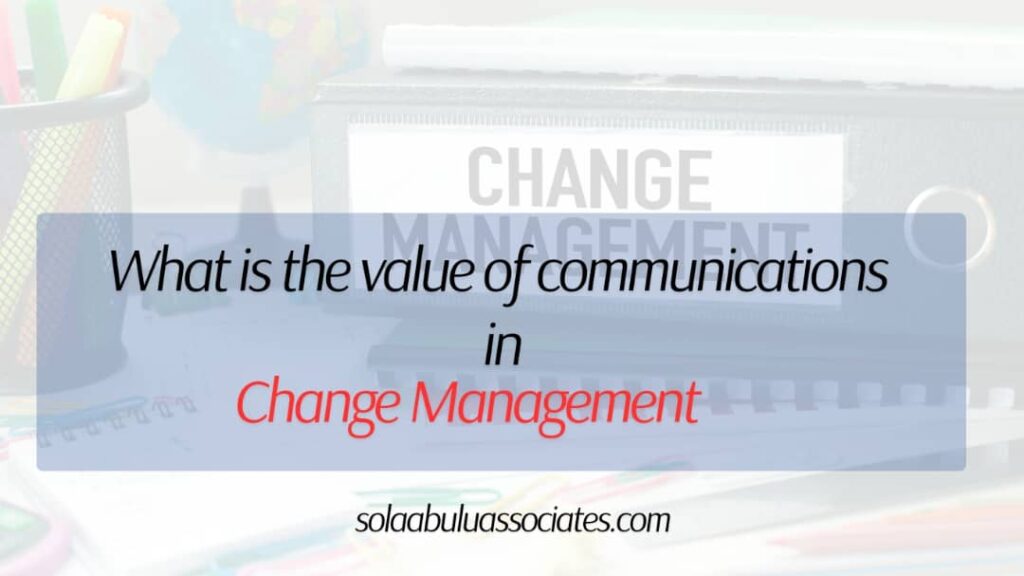What is the value of communications in change management?

Businesses/organizations experience change as a constant in different forms and communications is at the heart of change management. A lot of business leaders and executive officers focus more on assets and processes with less attention on people whereas the people of an organization or business are the drivers of this transformation. Some changes that can occur in an organization include; job changes, process changes, culture changes, etc. Change management has a lot to do with the seamless internal coordination that helps manage the transitions.
“In change management, your ability to get everybody along to the point that people begin to google up issues and help you refine your strategy as you go along is a strong part of communications.”
~Sola Abulu
Michigan State University in an article titled “What is Change Management?” states that;
Change management is not a reactive response if change happens; it is preparation for when change happens. Change management allows you to assess your situation and why change is needed, align your efforts and resources, and manage the change itself.
By coordinating and structuring change as a process to be managed, you have a far better chance of seeing results from your efforts. Change management should lead your employees, teams, departments and organization toward thriving and benefiting from change, rather than reacting and merely surviving it—or even worse, seeing no results from the change efforts.
You will find Yoni Ayiekoh’s case study paper on Change Management Practices and Growth of the Eastern and Southern African Trade and Development Bank very useful.
To have an effective change management program, there has to be a communications strategy and plan that is duly followed. Consider the following when developing a strategy for change management.
- What are your objectives? This question answers why the desired change is needed at the given time.
- What is your audience profile? A lot of organizational change affects the employees but some organizations tend to consider employees as homogenous. Audience profiling helps you understand which employees are majorly affected by the change. For instance, the management, in-house staff, field staff, etc. are all different audiences when it has to do with change management. The age groups of these people also differ. Audience profiling/segmentation is therefore key because the changes will impact the segment of people differently even where there may be commonality of experiences.
- What are the enablers and blockers of the change program? When this is identified, it can be easily planned for.
A strict communications strategy for change management prioritizes the following:
- Listening
- Responding
- Feedback mechanisms that gather information/insights to refine the strategy
Click here to learn more about the value of strategic communications in business, organizations, institutions and society.
……………….
Sola Abulu & Associates is a strategy and communications training and consulting firm focused on enabling businesses, brands and institutions to achieve their desired objectives through strategic communications and reputation management.
